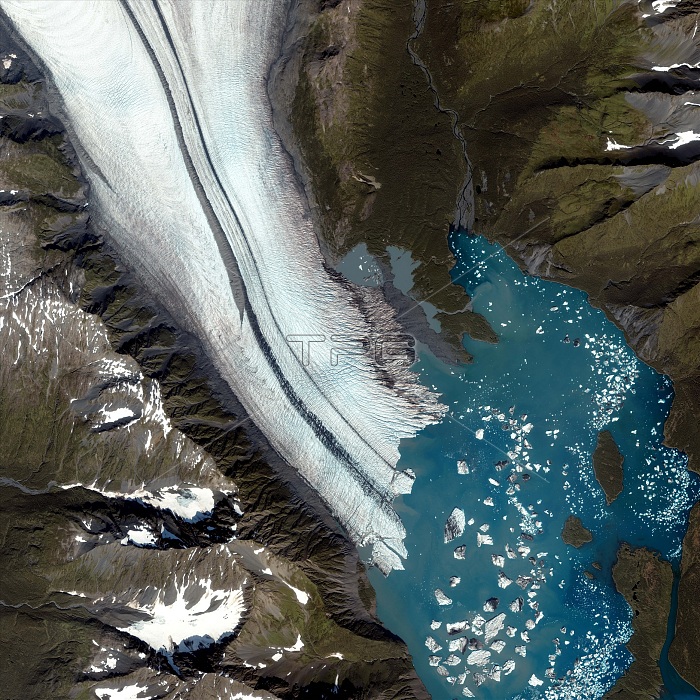
The Bear Glacier in the Kenai Peninsula along the Gulf of Alaska bears multiple clues about its past. The IKONOS satellite took this picture on August 8, 2005, capturing the glacier emptying into a nearby lake. Pieces of the glacier that have broken off look like shards of white glass in the blue water. Upslope from the lake, the foot of the glacier is riddled with crevasses and cracks in the ice caused by the glacier's movement over a rough surface. Not far from the edge of the glacier, the crevasses grow especially deep, not just cutting into it diagonally, but also forming a crosshatch pattern. As a glacier moves, it picks up dirt and debris from the rocks it passes. When two glaciers merge, as they have here, the dirt and debris they carry form parallel stripes, or medial moraines, on the ice surface. Besides the usual debris scraped off rocks by the glacier's movement, the medial moraine on the left includes an unusually thick layer of sediment, which tapers to a tip roughly halfway down the glacier's surface. Lakes forming at the tips of glaciers often have the characteristic blue-green color visible in this small lake.
| px | px | dpi | = | cm | x | cm | = | MB |
Details
Creative#:
TOP22310763
Source:
達志影像
Authorization Type:
RM
Release Information:
須由TPG 完整授權
Model Release:
N/A
Property Release:
No
Right to Privacy:
No
Same folder images:

 Loading
Loading